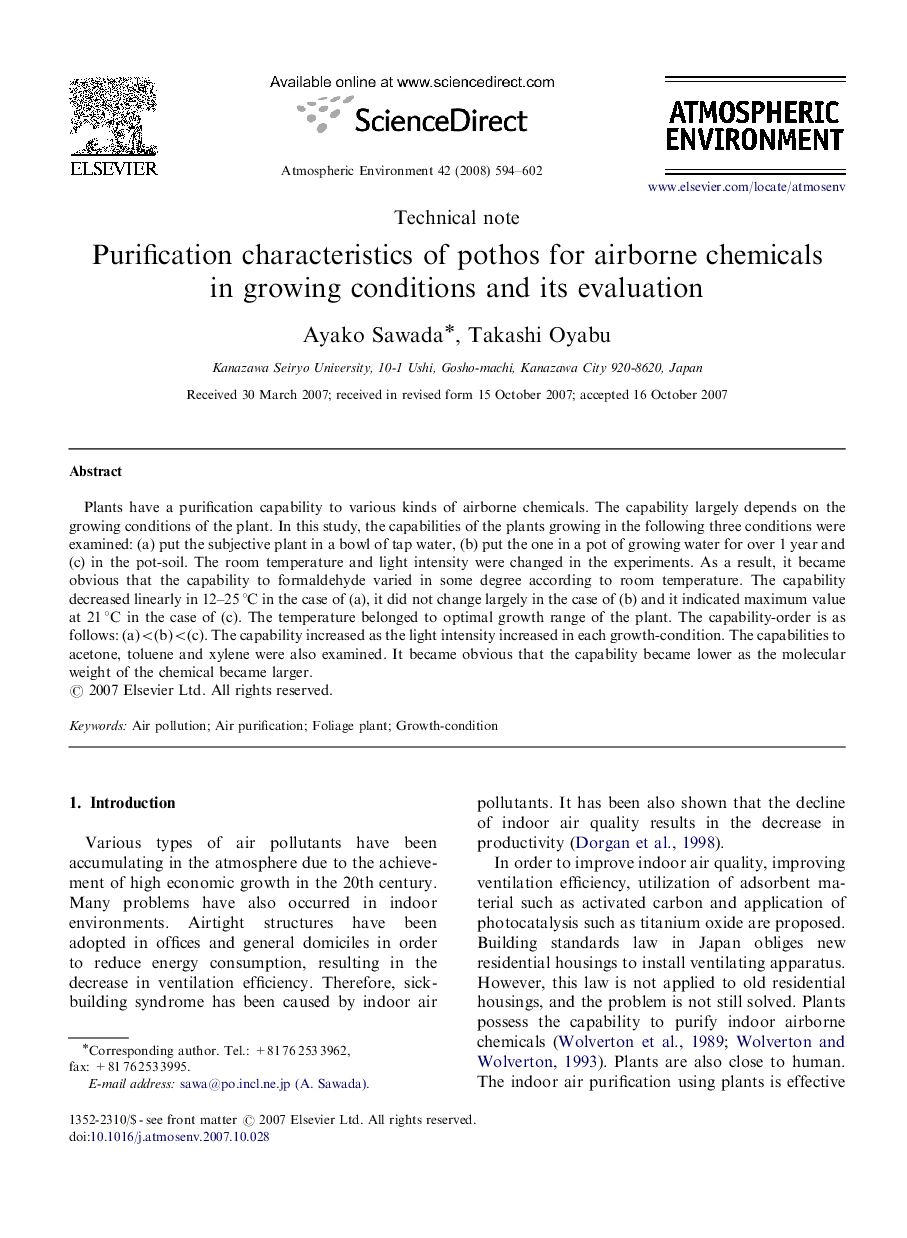| Article ID | Journal | Published Year | Pages | File Type |
|---|---|---|---|---|
| 4442862 | Atmospheric Environment | 2008 | 9 Pages |
Plants have a purification capability to various kinds of airborne chemicals. The capability largely depends on the growing conditions of the plant. In this study, the capabilities of the plants growing in the following three conditions were examined: (a) put the subjective plant in a bowl of tap water, (b) put the one in a pot of growing water for over 1 year and (c) in the pot-soil. The room temperature and light intensity were changed in the experiments. As a result, it became obvious that the capability to formaldehyde varied in some degree according to room temperature. The capability decreased linearly in 12–25 °C in the case of (a), it did not change largely in the case of (b) and it indicated maximum value at 21 °C in the case of (c). The temperature belonged to optimal growth range of the plant. The capability-order is as follows: (a)<(b)<(c). The capability increased as the light intensity increased in each growth-condition. The capabilities to acetone, toluene and xylene were also examined. It became obvious that the capability became lower as the molecular weight of the chemical became larger.
